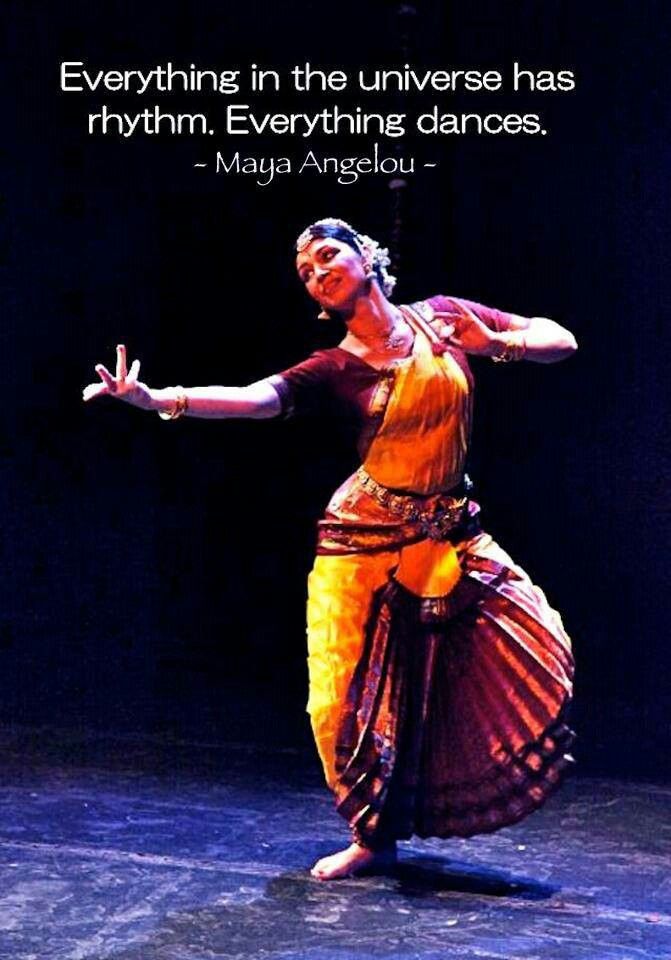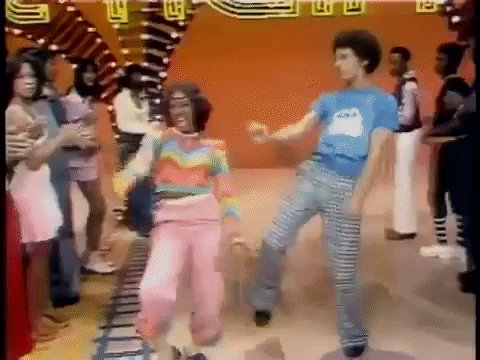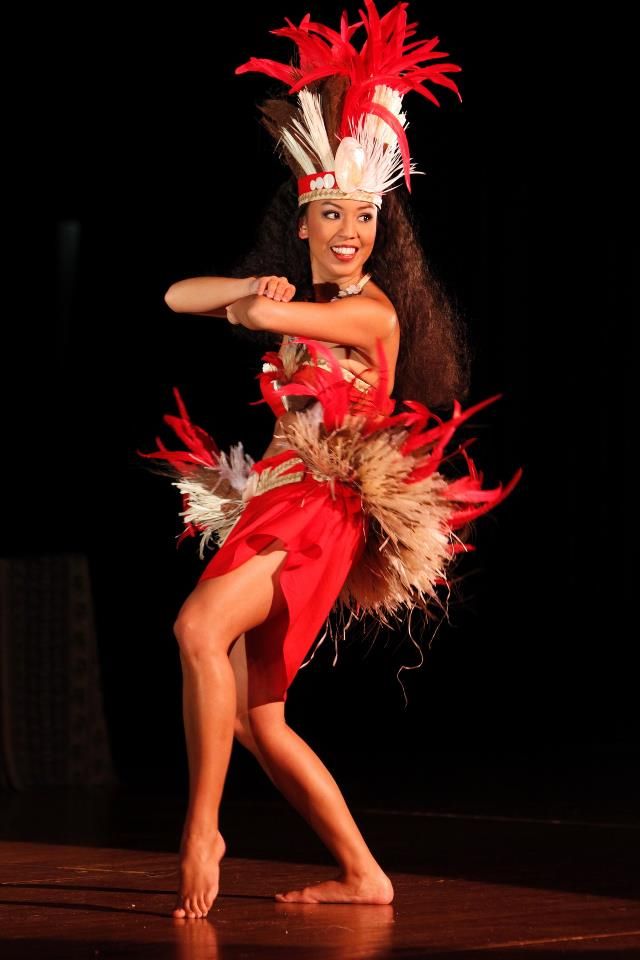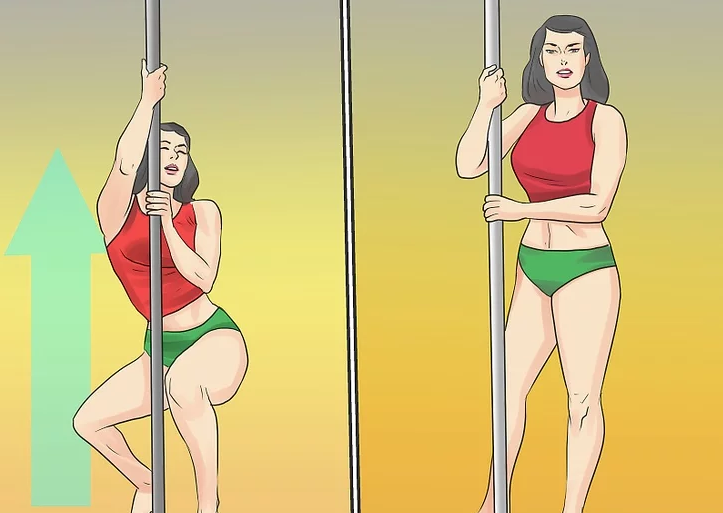How to dance the zorba
404 - PAGE NOT FOUND
Why am I seeing this page?
404 means the file is not found. If you have already uploaded the file then the name may be misspelled or it is in a different folder.
Other Possible CausesYou may get a 404 error for images because you have Hot Link Protection turned on and the domain is not on the list of authorized domains.
If you go to your temporary url (http://ip/~username/) and get this error, there maybe a problem with the rule set stored in an .htaccess file. You can try renaming that file to .htaccess-backup and refreshing the site to see if that resolves the issue.
It is also possible that you have inadvertently deleted your document root or the your account may need to be recreated. Either way, please contact your web host immediately.
Are you using WordPress? See the Section on 404 errors after clicking a link in WordPress.
How to find the correct spelling and folder
Missing or Broken FilesWhen you get a 404 error be sure to check the URL that you are attempting to use in your browser. This tells the server what resource it should attempt to request.
http://example.com/example/Example/help.html
In this example the file must be in public_html/example/Example/
Notice that the CaSe is important in this example. On platforms that enforce case-sensitivity example and Example are not the same locations.
For addon domains, the file must be in public_html/addondomain.com/example/Example/ and the names are case-sensitive.
Broken ImageWhen you have a missing image on your site you may see a box on your page with with a red X where the image is missing. Right click on the X and choose Properties. The properties will tell you the path and file name that cannot be found.
This varies by browser, if you do not see a box on your page with a red X try right clicking on the page, then select View Page Info, and goto the Media Tab.
http://example.com/cgi-sys/images/banner.PNG
In this example the image file must be in public_html/cgi-sys/images/
Notice that the CaSe is important in this example. On platforms that enforce case-sensitivity PNG and png are not the same locations.
404 Errors After Clicking WordPress Links
When working with WordPress, 404 Page Not Found errors can often occur when a new theme has been activated or when the rewrite rules in the .htaccess file have been altered.
When you encounter a 404 error in WordPress, you have two options for correcting it.
Option 1: Correct the Permalinks- Log in to WordPress.
- From the left-hand navigation menu in WordPress, click Settings > Permalinks (Note the current setting. If you are using a custom structure, copy or save the custom structure somewhere.)
- Select Default.
 index.php$ - [L]
index.php$ - [L]
RewriteCond %{REQUEST_FILENAME} !-f
RewriteCond %{REQUEST_FILENAME} !-d
RewriteRule . /index.php [L]
</IfModule>
# End WordPressIf your blog is showing the wrong domain name in links, redirecting to another site, or is missing images and style, these are all usually related to the same problem: you have the wrong domain name configured in your WordPress blog.
How to modify your .htaccess file
The .htaccess file contains directives (instructions) that tell the server how to behave in certain scenarios and directly affect how your website functions.
Redirects and rewriting URLs are two very common directives found in a .htaccess file, and many scripts such as WordPress, Drupal, Joomla and Magento add directives to the .htaccess so those scripts can function.
It is possible that you may need to edit the .htaccess file at some point, for various reasons.This section covers how to edit the file in cPanel, but not what may need to be changed.
There are Many Ways to Edit a .htaccess File (You may need to consult other articles and resources for that information.)
(You may need to consult other articles and resources for that information.)- Edit the file on your computer and upload it to the server via FTP
- Use an FTP program's Edit Mode
- Use SSH and a text editor
- Use the File Manager in cPanel
The easiest way to edit a .htaccess file for most people is through the File Manager in cPanel.
How to Edit .htaccess files in cPanel's File ManagerBefore you do anything, it is suggested that you backup your website so that you can revert back to a previous version if something goes wrong.
Open the File Manager- Log into cPanel.
- In the Files section, click on the File Manager icon.
- Check the box for Document Root for and select the domain name you wish to access from the drop-down menu.
- Make sure Show Hidden Files (dotfiles)" is checked.
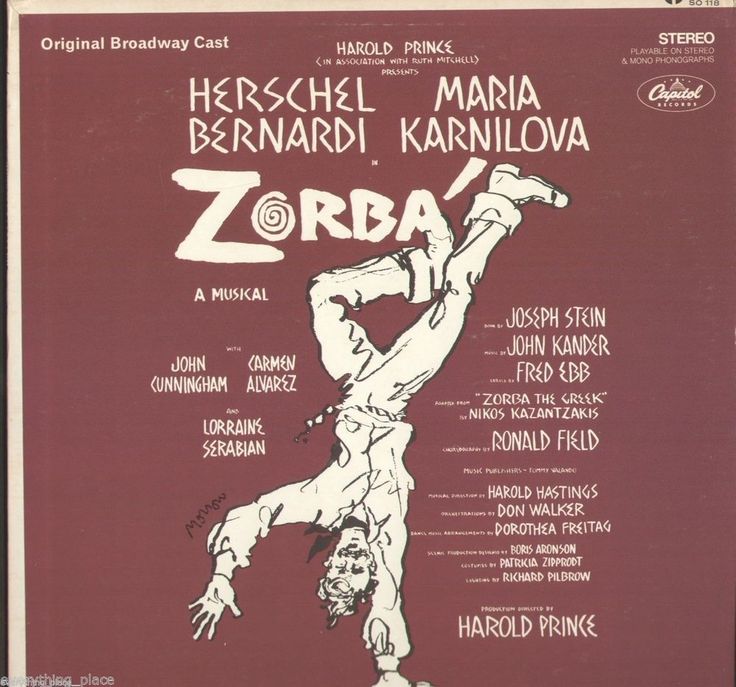
- Click Go. The File Manager will open in a new tab or window.
- Look for the .htaccess file in the list of files. You may need to scroll to find it.
- Right click on the .htaccess file and click Code Edit from the menu. Alternatively, you can click on the icon for the .htaccess file and then click on the Code Editor icon at the top of the page.
- A dialogue box may appear asking you about encoding. Just click Edit to continue. The editor will open in a new window.
- Edit the file as needed.
- Click Save Changes in the upper right hand corner when done. The changes will be saved.
- Test your website to make sure your changes were successfully saved. If not, correct the error or revert back to the previous version until your site works again.
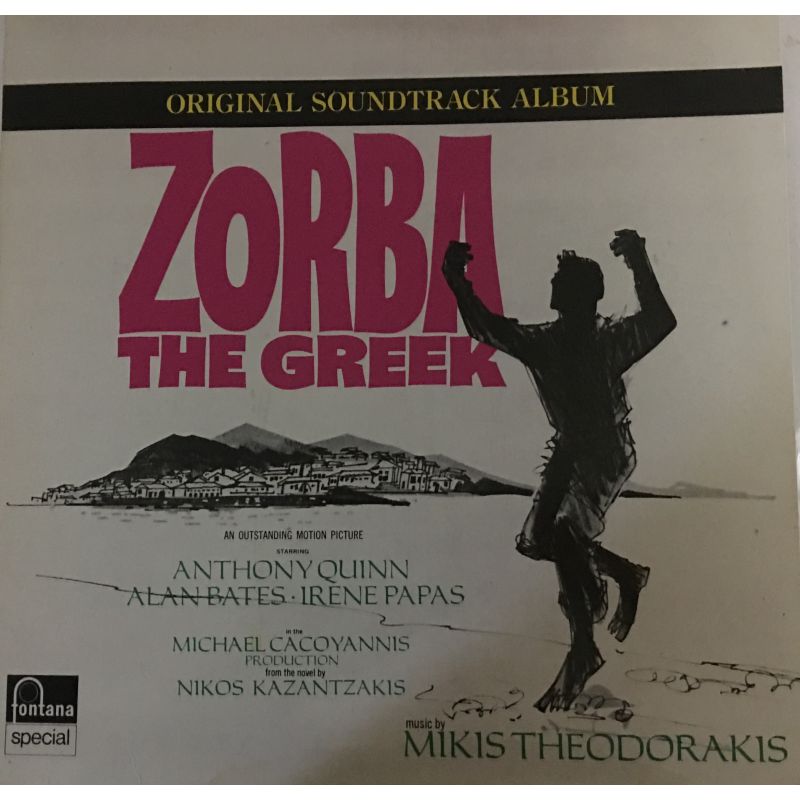
- Once complete, you can click Close to close the File Manager window.
Syrtaki (2*), Zorba’s dance – seuGreek – Folkdance Footnotes
*2nd Generation dance. A dance that developed and was disseminated in a non-traditional way. 2G dances are specific – have a fixed format designed to correspond with the arrangement of a particular recording., whereas 1G dances are generic – have a shorter sequence that works with live music – where many different songs are played and arrangements vary according to the tastes of musicians and dancers. For more on the differences between 1st & 2nd G dances click here.
Syrtaki is a media invention. When Anthony Quinn taught Alan Bates to dance in Zorba the Greek, he was performing a combination Vari Hasapiko and fast Hasapiko, choreographed by Giorgios Provias, to match the musical score written by Mikis Theodorakis.
 Starting slow and building up to a frenetic climax, it was a triumphant way to end a movie. Quinn had learned a more difficult dance, but sprained his ankle before shooting, so the final product is hardly a Greek dance at all.
Starting slow and building up to a frenetic climax, it was a triumphant way to end a movie. Quinn had learned a more difficult dance, but sprained his ankle before shooting, so the final product is hardly a Greek dance at all.When non-Greeks saw it, they thought it was a real Greek dance and soon tourists were demanding to be taught ‘Zorba’s Dance’. Since no such dance existed, everyone was free to do anything vaguely Greek that started slow and ended fast. Google ‘Zorba’ and ‘dance’ and look at the variations.
Someone started calling the dance Syrtaki, which means “little syrto” – a catchy name, even though the dance has nothing to do with a traditional Greek Syrto. It did however give the impression that Syrtaki was a real Greek dance, not just something from a movie.

If you want to dance a Syrtaki there are many printed dance notes you can learn. A better use of energy would be to learn Vari Hasapiko, Hassaposerviko, and fast Hasapiko. Then, instead of trying to perform someone else’s choreography, do what Zorba would do and dance as the spirit moves you!
Start slow, doing variations on Vari Hasapiko, including the basic step if you can. Sometimes the music gradually increases to a tempo suitable for Hassaposerviko. Sometimes it jumps abruptly to fast Hasapiko speed. Sometimes it even slows and speeds several times. Have fun with it. More than any other dance, with Syrtaki there is no right way or wrong way.
Like this:
Like Loading...
a symbol of Greece and the wealth of the Greek people
Sirtaki - a symbol of Greece and the wealth of the Greek people
Sirtaki is the youngest Greek dance, the history of which is worthy of a separate film. If you ask a tourist who has just returned from Greece what he remembers the most, he will certainly name this dance style. What is remarkable about it and how did it come about? Find answers to these questions in our article.
What is Sirtaki. Distinctive features of the dance
This is a Greek dance that originated in the 60s of the XX century thanks to one resourceful American.
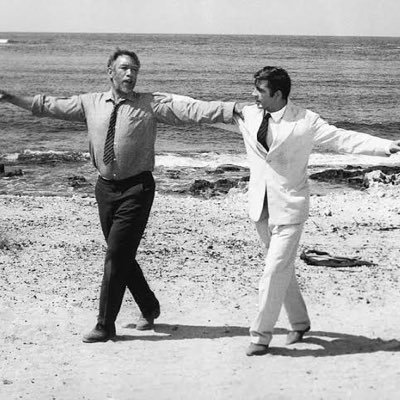 But some of the origins of the style can still be traced in the ancient culture of Greece.
But some of the origins of the style can still be traced in the ancient culture of Greece. It is believed that this genre is based on three Greek dances.
- Hasapiko is an ancient dance of the Greek warriors. Little is known about this style. According to legend, butchers danced the hasapiko at Easter, which is why it is often called the "butcher dance". In addition, from Turkish "kasap" is translated as "meat merchant", which again confirms the origin of the direction. With sirtaki, hasapiko is related to the construction of dancers in rows, when all the dancers put their hands on each other's shoulders.
- Hasaposervico is a quick version of hasapiko. To speed up the pace of the dance occurred to the Serbs, who came to Byzantium around IX. Their contribution to the development of the genre can be seen in the title: hasapo serviko . The rest of the dance is similar to its progenitor, hasapiko.
- Sirtos is the true folk dance of the Greeks.
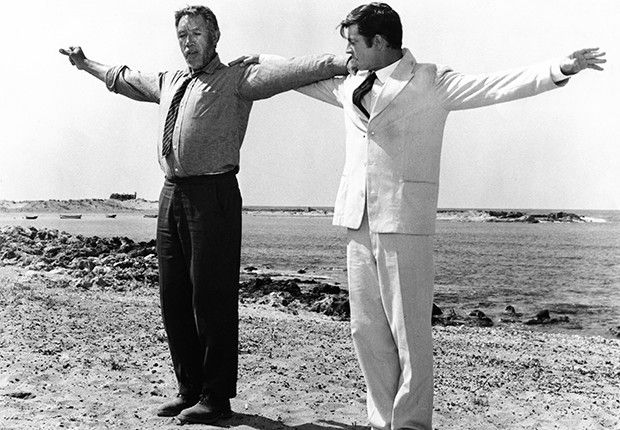 In the modern view, this is a whole group of styles that unites the cultures of various Greek regions. Sirtaki inherited slow pas from sirtos.
In the modern view, this is a whole group of styles that unites the cultures of various Greek regions. Sirtaki inherited slow pas from sirtos.
Can't wait to find out how sirtaki dance? In general terms, it looks like this:
- a group of dancers stand in a row, because sirtaki do not dance alone;
- each puts his hands on the shoulders of his neighbor, thus forming a long chain of like-minded people;
- then the music sounds and the dancers begin to perform slow figures of the dance, gradually accelerating and reaching the apotheosis;
- basic movements: smooth, sliding steps, semi-squats, sharp lunges and jumps. All steps are performed synchronously.
And now imagine what kind of energy is present on the dance floor when sirtaki is performed by 20 or 50 people! The pattern of the dance captures and bewitches, forcing you to admire the unity and friendship of the Greeks. But none of this would be possible without music.
 Let's talk about it in more detail.
Let's talk about it in more detail. Sirtaki story
“Stop! Taken!” - with these words, Michalis Kakoyannis completed work on the film "Zorba the Greek" in 1964, not suspecting what success awaits his work. But three "Oscars" out of 7 nominations pale in comparison with the love of spectators around the world for the sirtaki dance, which was first performed in this film.
Yes, the genre was born on the movie set, and the American actor Anthony Quinn, who played the role of Zorba, is considered its father. Thanks to him, or rather his broken leg, the dance entered the masses and became the hallmark of Greece. The case proceeded as follows.
The script called for Quinn to perform an ancient Greek dance by the sea. He had to make quick and bouncing movements. But before filming, the actor broke his leg, and the initial choreography resonated with pain in the injured limb. I had to come up with something. And then Quinn replaced the fast movements with slow ones.
 Instead of jumping, he began to slide on the sand, making smooth and careful steps.
Instead of jumping, he began to slide on the sand, making smooth and careful steps. Michalis Kakoyannis, the director of the film, was intrigued by the new dance and hurried to find out its name. "Sirtaki," Quinn replied, referring to a local resident who allegedly acted as the actor's teacher. It turns out that both the choreography and the name of the dance were invented by the main character of the film. Although there is another version regarding the last moment. She says that a Frenchman who was present on the set was involved in the title. He was interested in the question of the creators of the original Greek dance. They hastened to answer him that it was based on the most ancient dance of the Greeks, sirtos. The Frenchman instantly softened this name, turning it into sirtaki.
The end of filming was the beginning of the popularity of the style among the local population and far beyond the borders of Greece. But before gaining fame, the dance had to "survive" heated debates during editing.
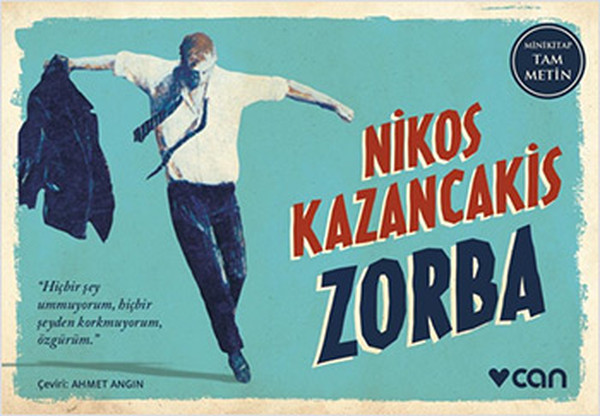 The fact is that Cacoyannis wanted to change the music in the episode where Quinn dances. But the film crew unanimously decided to keep the melody of Mikis Theodorakis - so accurately she described the character of the Greek people.
The fact is that Cacoyannis wanted to change the music in the episode where Quinn dances. But the film crew unanimously decided to keep the melody of Mikis Theodorakis - so accurately she described the character of the Greek people. "Zorba the Greek" with its simple and uncomplicated melody continued the era of "Greek excitement" that reigned in the 60s. Europe was already swept up in Melina's dance from the Piraeus Boys when sirtaki appeared on the stage. It began to be taught in the highest circles around the world, more and more imbued with Greek culture.
Dance also flourished in New York, where at the end of the 60s there were at least 10 clubs with Greek music. Their frequent customers were not only Greeks. Marlon Brando, Van Heflin and other famous personalities were noticed among those who wanted to learn sirtaki.
Interestingly, the dance continued to be used in other Greek films as well. So, in the 1966 film “My Daughter is a Socialist”, it is performed by Alika Vuyuklaki.
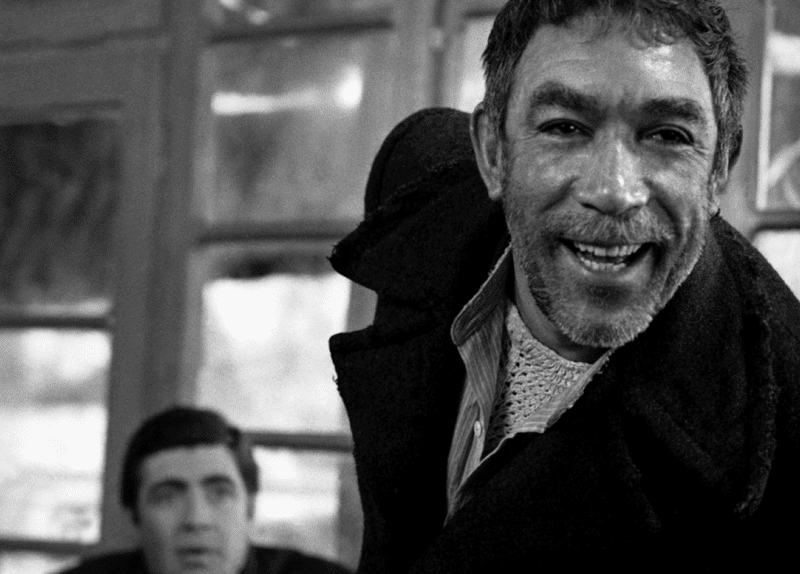
Sirtaki in a short time won the love of the Greeks and turned into a national treasure. However, he has not lost this title so far. Sirtaki and Greece are inseparable, although the dance has never been considered folk. This fact makes one wonder: why were the Greeks so imbued with his movements and music? The time has come to answer this question.
Sirtaki as a reflection of the national character
Zorba the Greek was mainly filmed in Crete. The inhabitants of the island, as well as the entire population of Greece, lead a calm, measured lifestyle. They do everything slowly, without forcing events. This behavior is very reminiscent of the beginning of sirtaki, filled with smooth movements.
But as soon as a Greek is asked to hurry up, he starts fussing and fussing at the speed of light. At this moment, the connection of the Greek mentality with the accelerating pace of sirtaki clearly emerges.
The similarity of dance with the way of life of the Greeks was noted even by the mayor of Athens, who held this post in the 60s.
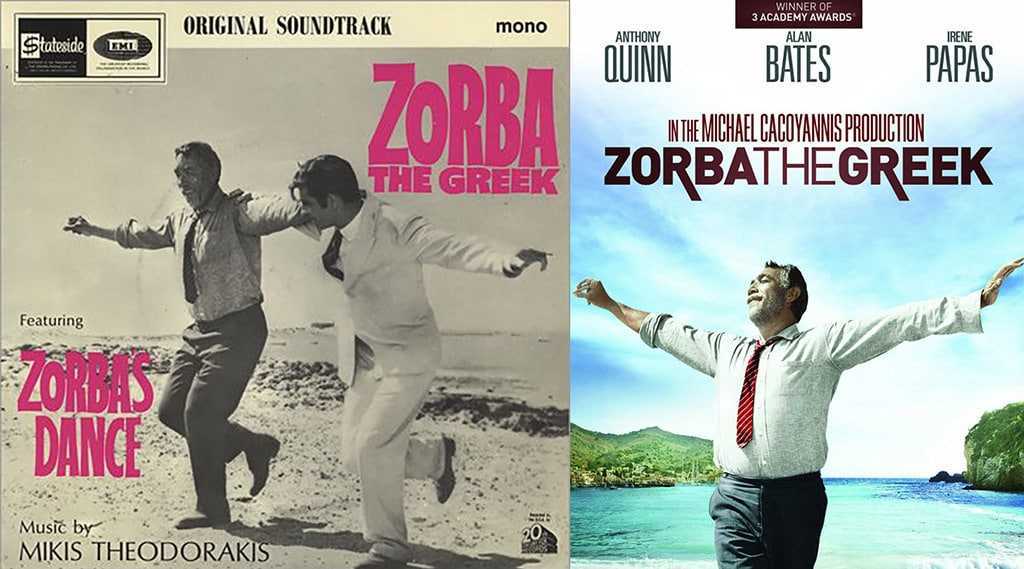 In his opinion, they are also slowly drawn into any business, gradually accelerating and reaching exorbitant speed.
In his opinion, they are also slowly drawn into any business, gradually accelerating and reaching exorbitant speed. So it turns out that sirtaki is a subtle understanding of the psychology of the Greek character, translated into the language of dance and music. No wonder why the style has become a symbol of Greece.
Interesting facts
- When watching the film "Zorba the Greek" you can see that Quinn dances either fast or slow. How is this possible if the actor had a broken leg? Everything is simple. In scenes with a quick sirtaki, we see a stunt double, not Quinn.
- The popularity of the sirtaki dance brought Anthony Quinn not only fame, but also allowed him to become an honorary citizen of Greece. The actor was awarded this title in the 90s. By the way, there were about 4-5 films in his career, including Zorba the Greek, in which he played the role of a Greek.
- Mikis Theodorakis, the author of sirtaki music, also got a lot of honors.
 So, the government of the USSR presented him with the Order of Lenin. By the way, many residents of the post-Soviet space fondly remember sirtaki and participation in its group performance.
So, the government of the USSR presented him with the Order of Lenin. By the way, many residents of the post-Soviet space fondly remember sirtaki and participation in its group performance. - In one of the interviews, when asked about the origin of sirtaki, Michalis Kakoyannis answered that Quinn was simply too lazy to learn the choreography. He did not mention any broken leg.
- One of the admirers of sirtaki was Aristotle Onassis, a well-known Greek businessman and billionaire.
- In November 2011, the French took to Place Défense in Paris to perform sirtaki en masse and support the Greek population in difficult times.
- On August 31, 2012, more than 6,000 dancers gathered on the embankment of the Greek city of Volos. Their goal was to perform the longest sirtaki for the Guinness Book of Records. The collection of applications for participation continued for several months, and rehearsals lasted about 30 days. As a result, 5612 people participated in the synchronous sirtaki, which was recorded by the international Guinness committee.
 By the way, 1672 people were involved in setting the previous record. It happened in 2010 in Cyprus.
By the way, 1672 people were involved in setting the previous record. It happened in 2010 in Cyprus. - A very negative attitude towards sirtaki has developed in Peru. The melody of the dance here is firmly associated with the leader of the Shining Path organization, Abimael Guzman. At one of the meetings, he performed the famous Greek dance, which brought the negative of the Peruvians to the style.
- The sirtaki is also called the Zorba dance, in honor of the main character of the film, as well as the dance of friendship due to the atmosphere of unity on stage.
- In 1967, the musical film Sirtaki was released in Greece. The tape is filled with love, romance and the desire to enjoy life, no matter what - that is typical for the dance itself.
- Greek dance ensembles perform sirtaki in national costumes - chitons.
The best music to perform sirtaki
This is definitely Zorba's Dance Mikis Theodorakis.
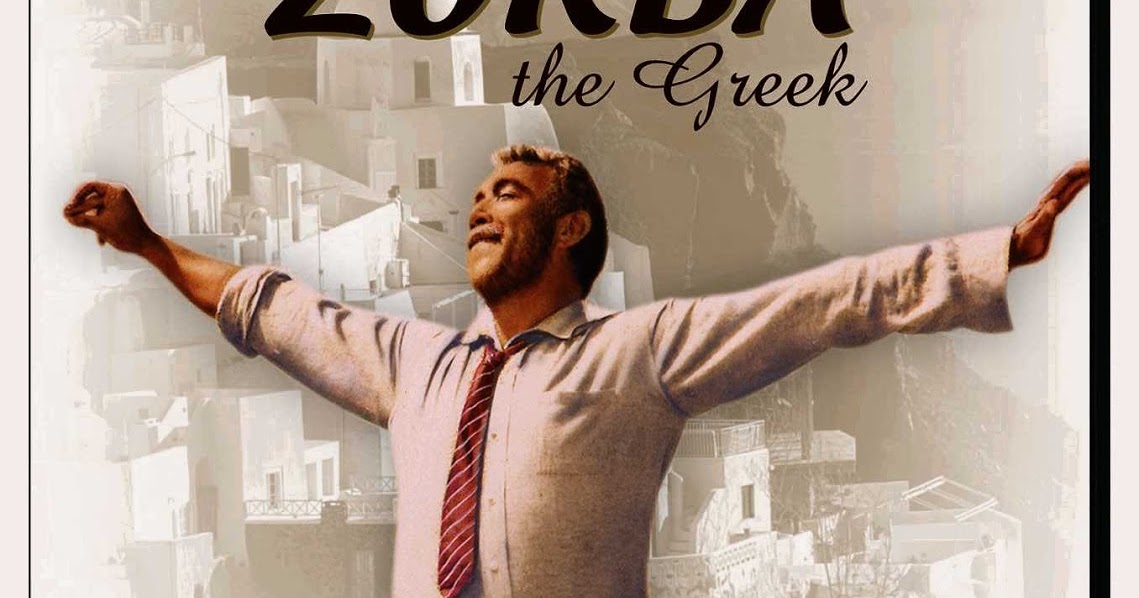 It is simply impossible to imagine a style without this musical accompaniment with an increasing tempo. Before writing the unofficial anthem of Greece, Mikis had to go through the Second World War and endure all the torture of the Nazis, being in captivity.
It is simply impossible to imagine a style without this musical accompaniment with an increasing tempo. Before writing the unofficial anthem of Greece, Mikis had to go through the Second World War and endure all the torture of the Nazis, being in captivity. The cruelty and heartlessness of the Germans did not break the friendly spirit of the young self-taught musician. After the war, he graduated from the Athens Conservatory and began to create. The main source of inspiration for Mikis was the musical culture of Crete. It was under her influence that he composes music for Zorba. The composer himself does not see anything remarkable in the melody, although he notes that it has a zest.
Zorba dance (listen)
Mikis introduced fashion not only for sirtaki, but also for bouzouki. It is a stringed plucked instrument known in Greece since ancient times. It is the bouzouki that accompanies the dancers and sets the mood for the dance. This musical instrument is even dedicated to a separate holiday, which is called the Buzuki holiday.
 They start celebrating it at midnight and enjoy Greek dances to its sound until 3-4 am.
They start celebrating it at midnight and enjoy Greek dances to its sound until 3-4 am. I would like to end my acquaintance with sirtaki with the words of the main character of the film “My Big Greek Summer”. What are the Greeks doing? Georgia asks and immediately gives an answer. - They are dancing!" It only remains for us to add: the sirtaki dance selflessly and with inspiration.
Like this page? Share with friends:
Sirtaki
Dances - Music of the peoples of Russia
Dance, as a natural continuation of music, could not but become part of the culture of the people.
Khorovod ( Karagod, tank, circle, street ) is an ancient folk circular mass ritual dance containing elements of dramatic action.

It is distributed mainly among the Slavs, but it is also found (under various names) among other peoples. The names of the dance among different Slavic peoples: kolo (Serbian), oro (Macedonian), kolo (Croatian), horo (Bulgarian). The name of other peoples: yokhor (Buryat), khore (Moldovan), heiro (Even), horumi (Georgian), etc. Longdol and minuet dances also have a certain similarity with the round dance.
The Eastern Slavs also call round dance outdoor games accompanied by a round dance.
The main figures of round dances.
The figure may start from a line, but more often it is the development of a circle. The leader breaks the circle and, continuing to move inside it, begins to make turns to the right and left, imitating the snake's curves. Other performers, without breaking their hands, follow the leader.
"Circle"The number of participants in the circle is not limited, but there must be at least three people. Guys and girls, turning to face the center of the circle and holding hands, form a vicious circle.
 Hands freely, without tension, move away from the body at a slight angle up or down. Movement in a circle in a round dance goes "salting" - in the direction of the sun, or clockwise, but it can also go against.
Hands freely, without tension, move away from the body at a slight angle up or down. Movement in a circle in a round dance goes "salting" - in the direction of the sun, or clockwise, but it can also go against.
"Two circles side by side"The circles are a short distance apart or very close. Each circle can move both clockwise and counterclockwise. The turns of both circles occur simultaneously or in one or in different directions.
"Circle within a circle"
One circle is large and inside it is a smaller circle. The outer circle moves along the sun, and the inner circle moves both along the sun and in the opposite direction.
Basket
The figure is formed from two circles (a circle within a circle). The outer one consists of guys, the inner one consists of girls. The circles must have an equal number of participants. Standing facing the cent, the guys and girls join hands, forming each of their own circle. Having taken a step towards the circle of girls, the guys raise their hands, and over the heads of the partners release them into the hands of the girls.
 The number of pairs is at least four. Hands can be both inside the circle and outside. To do this, the guys, and then the girls, raise their hands and lower them over the heads of their partners behind their backs.
The number of pairs is at least four. Hands can be both inside the circle and outside. To do this, the guys, and then the girls, raise their hands and lower them over the heads of their partners behind their backs.
"Eight"This figure is formed from two circles standing side by side. The circles move in different directions and at a certain moment the leaders break them at the same time, and the participants pass through one from one circle to another. A pattern similar to the number "eight" is formed. "Eight is performed, both one by one and in pairs. The number of participants or pairs in each circle should be the same.
"Snail"
This figure is formed from a circle. The leader breaks the general circle and, continuing to move in the same direction , starts a new circle inside the big one, then starts a second, third, etc. The "development" of the figure can be different.0005
1 - Option. Continuing to move, the leader makes a 180-degree turn to the left and begins to lead the round dance along the corridor formed between the circles.
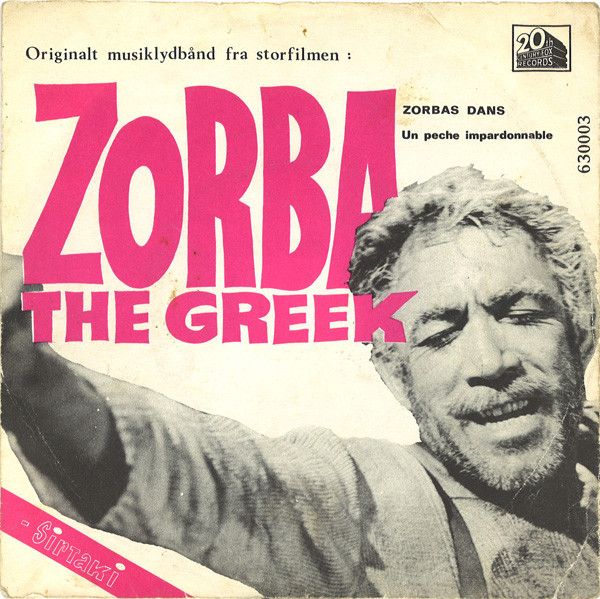 The movement goes in gradually increasing circles until the formation of the initial circle.
The movement goes in gradually increasing circles until the formation of the initial circle. 2nd variant. The round dance stops, the participants stand facing the center of the circle. The leader, bending down, passes under the hands of one pair of the first inner circle, then the second, and so on, until he leaves the last outer circle, leading a round dance chain.
3rd option. "Develops" the "snail" the second leader, located at the other end of the round dance chain. All participants begin to move in the opposite direction, repeating the same pattern as during the "curl". Circles go in a concentric circle, but gradually increasing.
"Snake" figure "street". These lines can converge at the same time, or one line stands still and the other goes towards it, or one line recedes and the other goes towards it. Lines can consist of girls and boys, or they can be mixed.
"Column"
This is a formation in rows. Each row consists of several people (at least two).
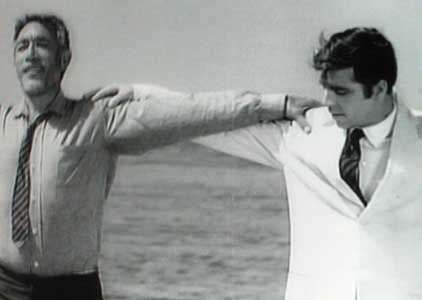 In each row
In each row there should be the same number of participants standing at a short distance from each other. Several such rows form a "column". The rows stand at the back of the head one another. "Column" - is an elongated rectangle, whose length is greater than the width.
"Street"
Two rows, standing parallel at a short distance, facing each other, form the Figures described below, may consist of some girls, or some guys, or guys and girls together. Performers may be lined up or paired. The position of the hands is determined by the director, the figures are performed in motion.
Russian dance was born in a round dance and came out of it, breaking the round dance chain and providing scope for the imagination and individual skill of a dancing person, complicating the technical basis, creating its own forms and drawings, replacing the round dance with a dance song and various musical accompaniment. Russian dance was of an improvisational nature.
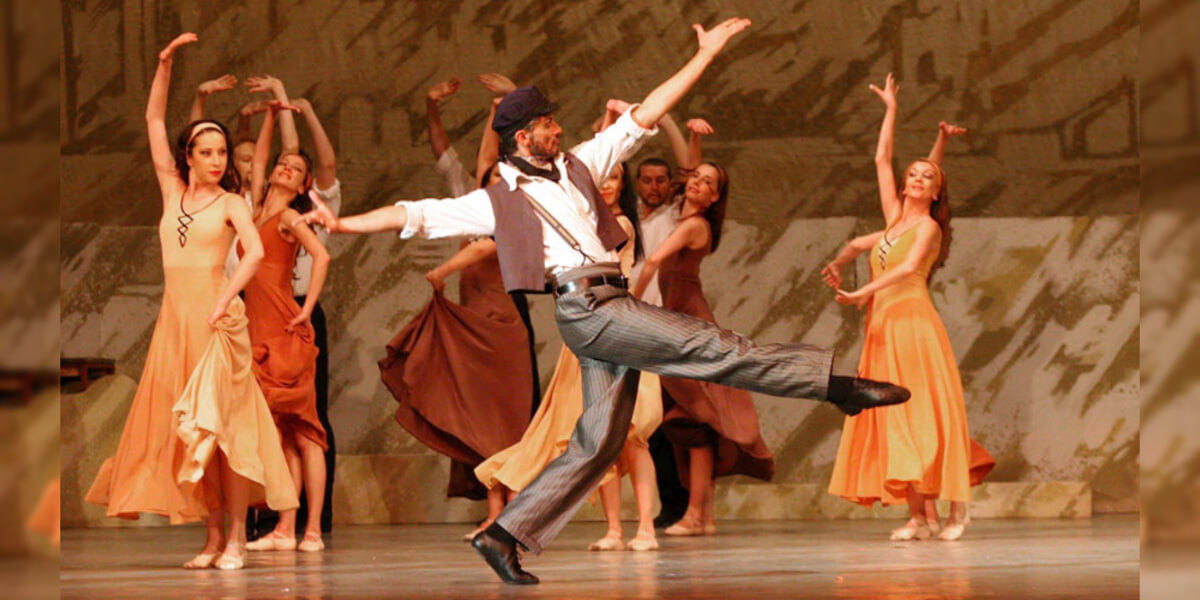 Each region of Russia has its own local type of dance. The dance differs according to the context of performance: ritual, non-ritual. Dance figures - knees - were very diverse. The participants in the dance freely used them at their discretion. The movement of dancers across the dance field was not regulated either: everyone could take the place that he wanted. The most famous dances in Russia: Quadrille - a type of dance that has a huge number of variations among various nations.
Each region of Russia has its own local type of dance. The dance differs according to the context of performance: ritual, non-ritual. Dance figures - knees - were very diverse. The participants in the dance freely used them at their discretion. The movement of dancers across the dance field was not regulated either: everyone could take the place that he wanted. The most famous dances in Russia: Quadrille - a type of dance that has a huge number of variations among various nations.
Plato's quadrille. A dance performed by four couples. The movements have a round dance character, that is, the expressiveness of the dance does not lie in the individual movements of an individual, but in the coordination of pairs. These are eights, crosses, twists and other paired movements. Girls sometimes go to another guy, always returning to their own at the end of the knee.
Photographs taken in the Kazachya Zastava camp of the Novosibirsk Metropolis in 2011.

1 Who doesn't know Greek dance sirtaki ?!
Perhaps sirtaki can be called one of the symbols of Greece. This is funny, considering that Greece appeared around three thousand years BC, and the sirtaki dance originated in 1964 and was specially made for the film Zorba the Greek. According to the script, Quinn, who played the same Zorba, needed to dance something national - with jumps and energetic movements. Composer Mikis Theodorakis composed slower music, and the actor danced a “folk” dance of his own composition to it.
Quinn told the director that one of the locals taught him the dance, and this dance is called “sirtaki” (translated from Greek as “touch”). However, the dance of the butchers did not become a symbol of Greece, and sirtaki (or as it is also called the “Dance of Zorba”) became a fact.
And here is an excerpt from the film "Zorba the Greek", where you can see this dance:
Zorbas Syrtaki.
 mp4
mp4 2 If you at least once heard the name of the Italian dance tarantella , then you probably noticed the similarity of this word with the word "tarantula". They are truly family and friends. In the 15th century, Italian doctors "invented" such a disease as tarantism - the insanity of a person bitten by a tarantula. It was believed that it was possible to cure the disease with the help of special body movements accompanied by music. Later they became a dance.
Ossetian dances
The most characteristic movements of the dance folklore of the Ossetians are the movements of the legs, which are distinguished by a fine and filigree performance technique. Among them are simple steps, steps on half-toes (qahælgtyl), on toes (qahfyndztyl), steps with a sliding movement with a variable accent of the left and right legs (sirgæ), variable throwing out with a slight circular movement of the right foot to the right, left to the left (simgæ), springy jumps with alternating contact with the ground "heel-toe" and right and left legs (kahgæ gæpp), the same jumps - "scissors" with a deliberate twisting of the heel (dzuarværd gæpp), variable jumps on half-toes or toes of one leg (iu kahyl gæpp).
Hand movements are just as varied. The amplitude of their movement is very large and can be synchronous or, conversely, alternate and asymmetric. In female plastique, the hands move more plastically in the dance and do not rise above the head. A special load falls on a part of the arm from the forearm to the hand, with an emphasis on the work of the hand with peculiarly open fingers. All famous dances of folk choreography were performed to the clapping of hands. This technique, together with instrumental accompaniment, stabilized the rhythm of the dance and thus facilitated the execution of dance movements.
In this case, it is not the artistic and aesthetic specificity of the Ossetian folk choreography that attracts attention, but the very fact of beating the rhythm for the dancers. It apparently performed, in addition to purely utilitarian, and cult functions. Joint performance united dance participants with the audience, expressing a sense of solidarity, the ability to act simultaneously and accurately, obeying the common functions of the dance.
The most ancient types of dances of the Ossetians "Simd", "Chepena", "Tsoppai" by the nature of the performance belong to the mass dances. This is undoubtedly explained by the fact that in the minds of people of that era of the origin and development of these types of dance folklore, the concept of the collective was primary, and the concept of the individual was secondary. This worldview model survived until the Middle Ages. It is well known that “a medieval person could fully acquire and realize himself only within the framework of a collective, through belonging to it he joined the values that dominated in this social environment” (7, p. 278).
The main and ubiquitous compositional pattern of Ossetian mass dances was a circle. The names of some of the Ossetian dances testify to the antiquity of this choreographic figure: “Tymbyl simd”, “Tymbyl kaft”, “Zilgæ kaft”.
One of the most ancient Ossetian dances is "Simd", which over time not only has not lost its freshness, but has become the pinnacle of Ossetian folk choreography. “Simd” is a true pearl of the Ossetian folk dance art; in terms of beauty and grandeur, it ranks first among Ossetian folk dances” (6, p. 14). This high certification is shared by other specialists. “Famous professional choreographers, such as I. Moiseev, I. Arbatov, V. Krieger, rank the Ossetian “Simd” in terms of its emotional and compositional content as masterpieces of dance art”
“Simd” is a true pearl of the Ossetian folk dance art; in terms of beauty and grandeur, it ranks first among Ossetian folk dances” (6, p. 14). This high certification is shared by other specialists. “Famous professional choreographers, such as I. Moiseev, I. Arbatov, V. Krieger, rank the Ossetian “Simd” in terms of its emotional and compositional content as masterpieces of dance art” In the traditional life of the Ossetians, several varieties of this round dance were widespread. As early as the end of the 19th century, the male version of "Simda" was widespread with a frank demonstration of the strength and prowess of its performers. One of the best connoisseurs of Ossetian dance folklore, M. S. Tuganov, noted that the male version of the dance in question was known as “Nærton simd” or “Æddæguælæ kaft”, which respectively means “Nart simd” or “dance over another”.
Another name "Æræftitæ", derived from the dialect word "æræf" - "to cover" has been preserved.
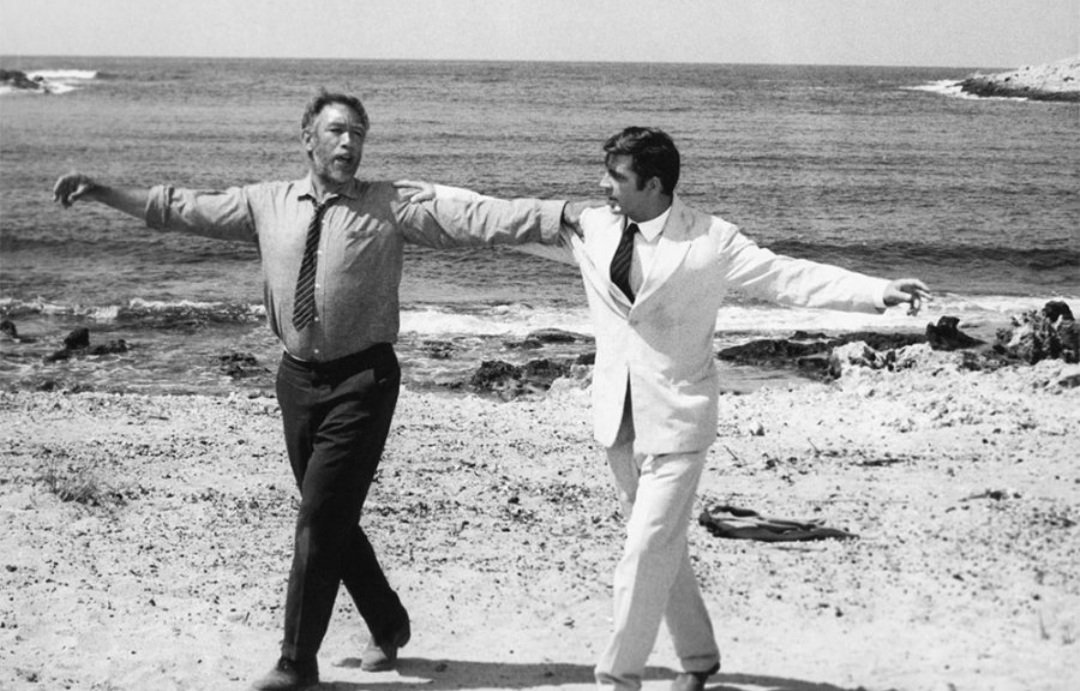
.

